Ryan FR-1/FR-4 Fireball
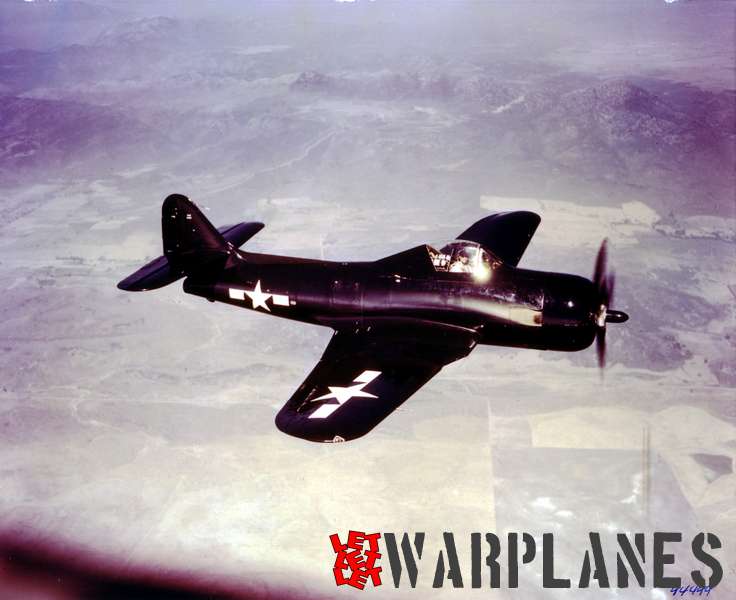
Introduction
With the arrival of the first practical jet engines from British origin in the U.S.A. the first U.S. built jet would soon fly. This was the Bell P-59 Airacomet, making its first flight on 1 October 1942 . The U.S. Navy received two YP-59A’s for evaluation but soon discovered the disadvantages of a jet plane. They needed long take-off runs, had a high landing speed, high fuel consumption and a sluggish throttle response. As an alternative solution the U.S. Navy draw up specifications fox a mixed-power carrier-based fighter with both piston and jet engine. It would normally start and cruise on the piston engine and only for direct interception of an enemy plane it would use both engines to complete its mission. Once the mission was completed, the jet engine would be switched off with for return flight and landing only the piston engine in use. Theoretically it seemed very practical to overcome the major basic problems of jet propulsion. A number of proposals was submitted by various companies, but Ryan was eventually selected and received a contract for the supply of three prototypes and one static test frame.

Construction and testing
The Design of the FR-1 began in 1943 as Ryan’s answer to a proposal instigated by Admiral John S. McCain. Ryan designated their design as Model 28. It featured a nose mounted Wright Cyclone radial engine, augmented with a turbojet to boost speed and climb during combat missions. The air intakes of the jet engine were placed in the wing roots. Ryan received in January 1943 a contract for the construction and supply of three prototypes as XFR-1. The name selected for the new fighter was Fireball. The project looked so promising that even before completion of the first prototype the U.S. Navy already ordered 100 production FR-1’s.
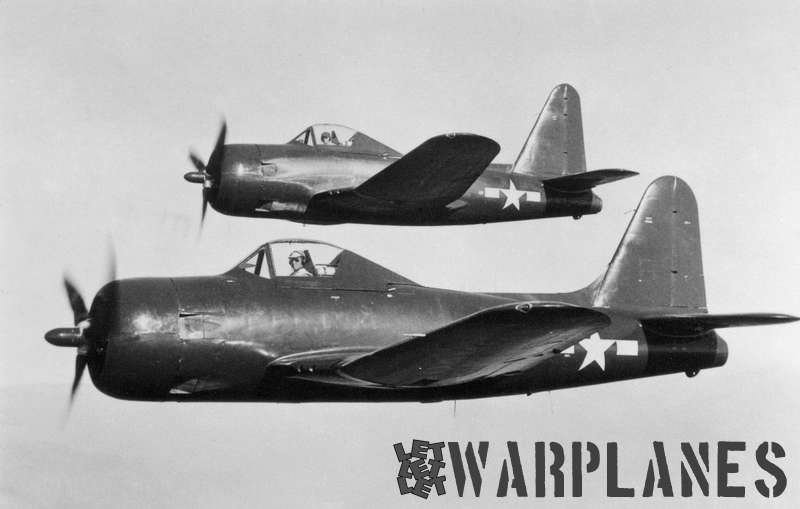
The maiden flight of the first XFR-1, carrying serial number 48232, took place on 25 June 1944 with Ryan test pilot Robert Kerlinger at the controls, although the jet engine was not yet installed at that time. First flight with both engines took place a few days later. The second XFR-1, no. 48233, made its first flight on 20 September 1944. The third one, with serial no. 48534 followed shortly later.
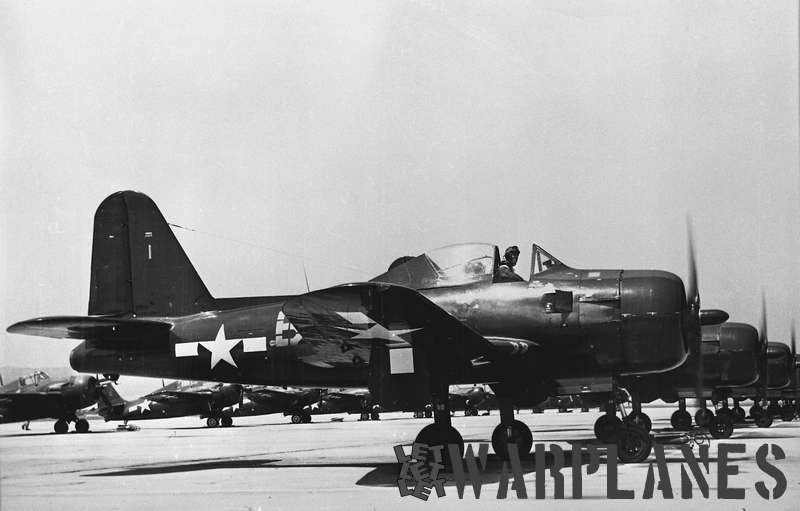
However, the early test flight phase of the Fireball was not without problems. The first prototype crashed on 13 October 1944, killing Robert Kerlinger when it broke up in flight. Also the second XFR-1 was involved in a fatal crash on 25 March 1945, killing Ryan test pilot Mickey McGuire when he was unable to recover from a dive. It was discovered that the wing surface plating was too weak. As a result of the two crashes, the wing construction of all Fireballs was strengthened. Another change was the increase of the original vertical tail surface to improve stability. The third prototype no. 48534 was lost on 5 April 1945 when Ryan test pilot Dean N. Lake had to bale out during a high speed pass across Lindbergh Field when the plane went out of control after the canopy was blown off. He escaped without further injury.
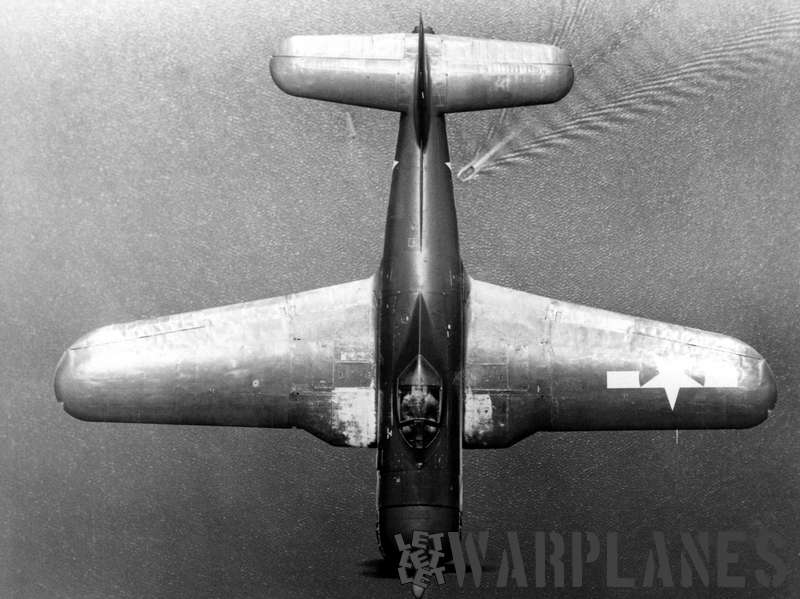
Intro production and service
In spite of these setbacks, the Navy had placed on 2 December 1943 an order for an additional 100 production FR-1’s. A later contract on 31 January 1945 increased the total of FR-1s on order to 700.
The first production FR-1 flew for the first time in March 1944. When the war ended in August 1945, these additional orders were cancelled. Also the earlier order of 100 FR-1’s was partly cancelled and at the end only 66 were delivered. They carried the serial numbers 39647 up to/including 39712. The production of the FR-1 was completed in November 1945. One Fireball, no. 39665, was fitted with a more powerful Westinghouse J34 engine and two flush air intakes on both sides of the fuselage as XFR-4. For this purpose, the rear part of the fuselage was redesigned and lengthened with a 203 mm fuselage section. The XFR-4 was the fastest Fireball with a top speed approx. 100 mph (161 km/h) faster than the FR-1. The turbojet’s air intakes were moved from the wing roots to the fuselage in front of the wing; they were covered by electrically powered doors to lessen drag when the aircraft was only flying on its piston engine. These air intakes were of the flush-type, specially developed by NACA for low drag. The XFR-2 with a more powerful piston engine and the XFR-3 with also a more powerful jet engine were cancelled by the end of the war. With the operational introduction of the first generation of pure jet fighters, it was soon evident that the Fireball was in fact already obsolete.
Total Fireball production was:
XFR-1 nos. 48522, 48233 and 48234 (3)
FR-1 nos. 39647 to 39712 (66)
XFR-4 converted from no. 39665
The improved XF2R-1 Dark Shark was converted from FR-1 no. 39661.
Pilots flying the Fireball were very pleased with its flight and handling characteristics. Because it had relatively small dimensions and a light all-up weight it was highly manoeuvrable and could out-turn the F6F Hellcat and even the new F8F Bearcat. On both engines, it also had a phenomenal rate of climb.
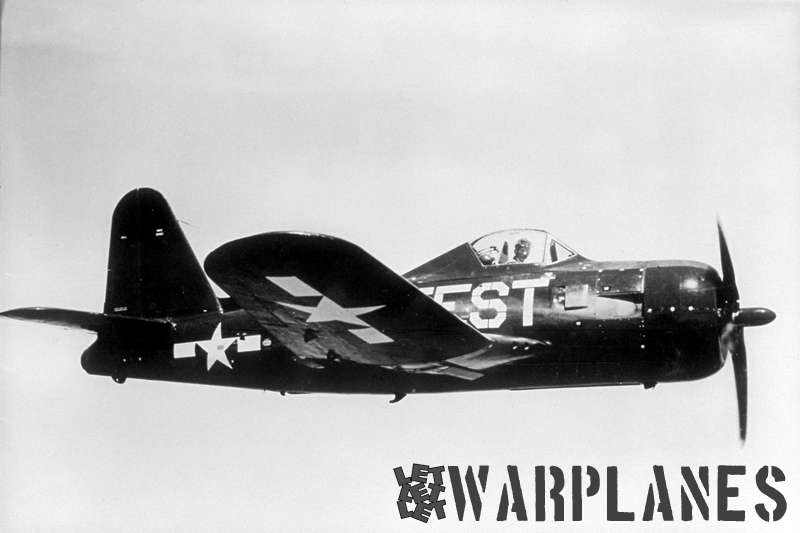
For the operational evaluation of the Fireball a special naval squadron was formed: no. VF-66. It was active between March 1945 and 15 October 1945. It only had a limited flying career as VF-66 squadron, since it was soon merged into the operational squadron VF-4. VF41 was active from 15 October 1945 to 1 August 1947. It was later, re-designated as VF-1E. Operational testing of the FR-1 took place at the Naval Air Test Centre (NATC) at Naval Air Station Patuxent River. On 6 November 1945, a Fireball of VF-41 became the first aircraft to land under jet power on an aircraft carrier, although this was quite unintentionally. After the radial engine of an FR-1 failed on final approach to the escort carrier USS Wake Island, the pilot managed to start the jet engine and land, barely catching the last arrestor wire before hitting the ship’s crash barrier. The pilot involved in this incident was Ens. J.A. West in ship no. 39682.
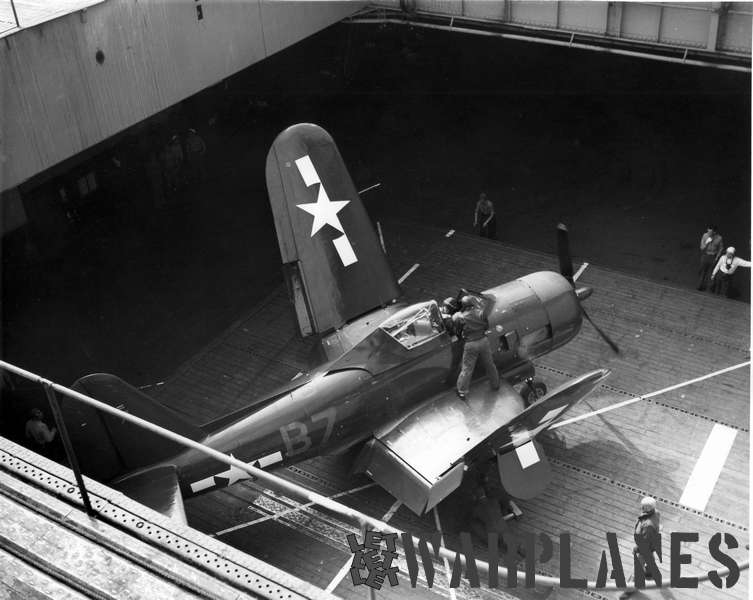
Carrier acceptability tests were also included revealing some additional problems. The piston engine tended to overheat until electrically operated cowl flaps were installed, the catapult hooks had to be moved forward and the nose wheel oleo shock strut had to be lengthened by 3 inches (76 mm). Carrier suitability tests began aboard the escort carrier USS Charger in early January 1945. The aircraft successfully made five catapult take-offs using the piston engine as well as three take-offs using both engines. No problems were reported when landing aboard the carrier.
VF-41 lost its squadron commander John F. Gray on 3 June 1946 whilst flying Fireball no. 39696 when its wing broke off during a barrel roll. His plane went out of control and when spinning down he hit an FR-1 flying below him. The pilot of the other FR-1 (no. 39677) , Ens. J.C. West, was also killed. That 3 June 1946 must have been a very black and tragic day for VF-41!
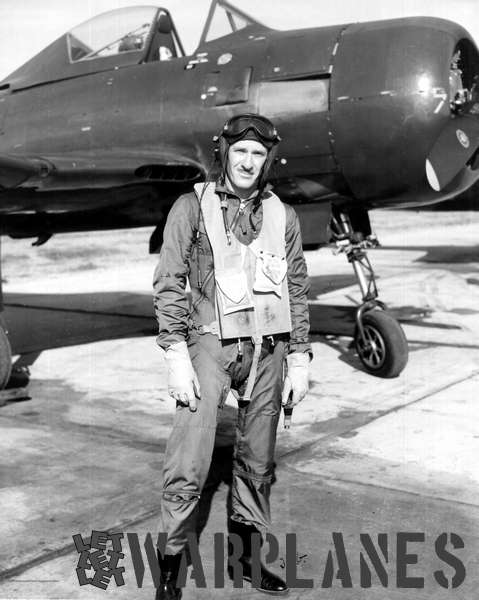
VF-1E conducted carrier qualifications in March 1947 aboard the escort carrier USS Badoeng Strait but only eight pilots successfully qualified, not least because the FR-1s were proving to be too fragile to endure repeated carrier landings. During one brief deployment in June aboard USS Rendova, one aircraft broke in two during a hard landing. Subsequent inspections of the squadron’s aircraft showed signs of structural failure and the Fireballs were all removed from flying status by 1 August 1947.
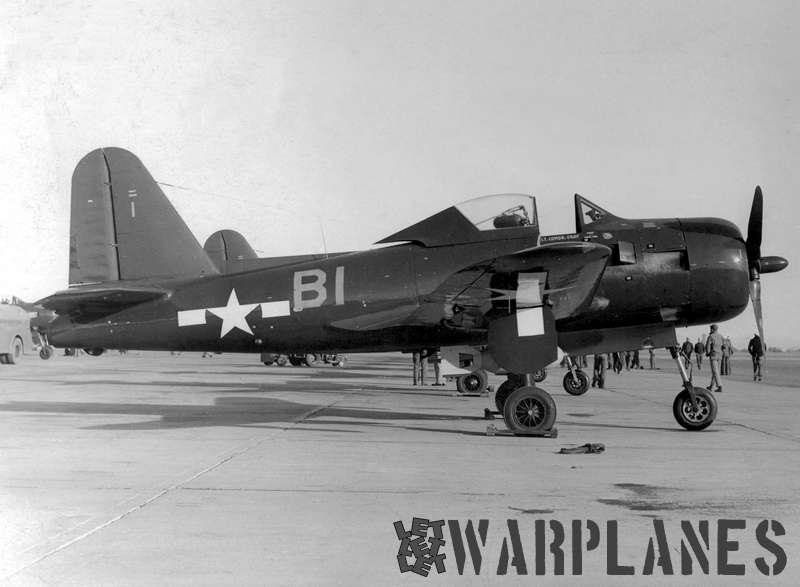
A limited number of Fireballs was used to give future jet pilots some experience with this type of propulsion. In practice, these student pilots started on both engines. Shortly after the start the piston engine was switched off and further flight was made using the jet engine only. Oddly enough, this was exactly the opposite kind of flying for which the Fireball was intended!
Survivors
Only one Fireball still exists today; no. 39657 is now exhibited in the Planes of fame Museum at Chino, Ohio after a complete recent restoration.
The San Diego Aerospace Museum had a completely restored FR-1 on display , but during a large fire in February 1978 it was one of the types that was completely destroyed together with more than 50 other aircraft.
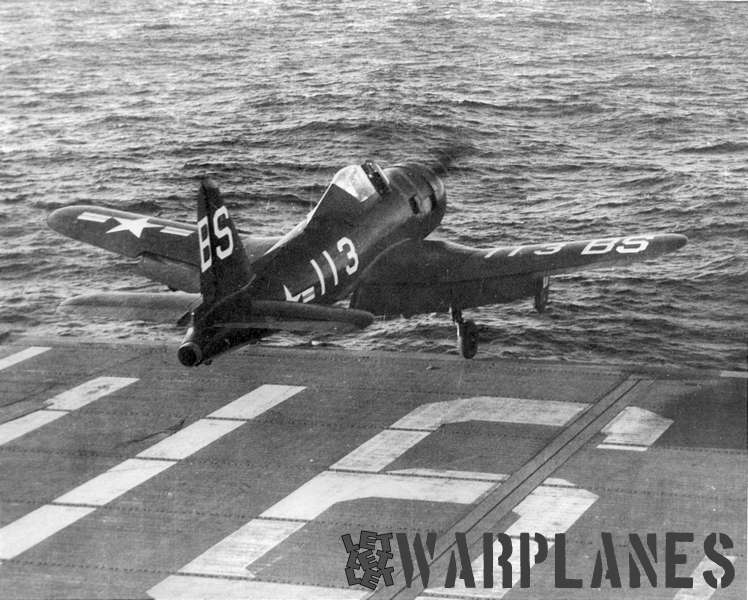
Incidents and accidents
As we have already seen all three XFR-1 prototypes were involved in crashes; two being fatal to the pilot. Also the operational Fireballs had a high accident rate with 33 accidents over a two year period. Eleven FR-1’s definitely written off as 100% damage were:
39663 (27 July 1945)
39686 (20 September 1945)
39669 (10 October 1945)
39692 (7 November 1945)
39695 (20 November 1945)
39699 (2 April 1946)
39677 (3 June 1946)
39696 (3 June 1946)
39678 (17 December 1946)
39684 (17 February 1947)
39681 (4 March 1947)

Technical details (FR-1):
Power plant: Wright R-1820-72W Cyclone nine cylinder air cooled radial engine of 1425 hp and a General Electric J31-GE-3 jet engine of 726 kg thrust
Sizes: wingspan 12.20 m
length 9.86 m
height 4.15 m
wing area 25.54 m2
Weights: empty weight 3488 kg
loaded weight 4473 kg (maximal 4806 kg)
Performances: max. speed 475 km/h at 5029 m on piston engine
686 km/h on both engines
service ceiling 13,137 m
range 1658 km on internal fuel
Armament: four 12.7 mm machine guns in the wings with 300 rounds each and under-wing hard-points for two bombs of 454 kg or eight 12.5 cm unguided rockets
Accommodation: pilot only
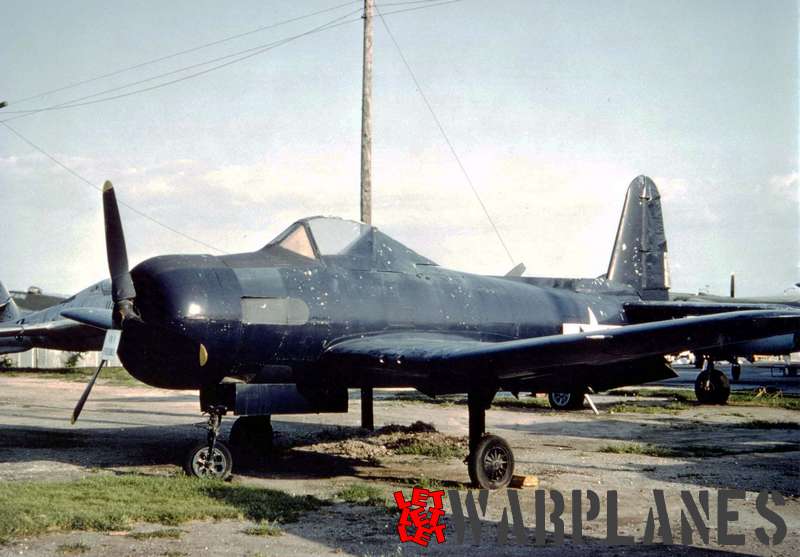
Description:
The Fireball was a low wing monoplane of all-metal construction. Also all control surfaced were covered with duraluminium. It featured a relatively broad fuselage to make sufficient room for the jet engine that was housed in the fuselage centre behind the cockpit section. Air intakes were fitted on the inboard leading edge sections of both wings. A long tailpipe led the exhaust gases to the rear end of the fuselage. The whole tail section including the jet engine could be easily detached from the rest of the plane. The wings had a laminar profile, as used earlier on the P-51 Mustang. In fact the FR-1 was the first Navy production type fitted with laminar profile wings. For use on aircraft carriers the wings could be folded upwards. To simplify the fuel system, both engines used the same grade of avgas. Two self-sealing fuel tanks were housed in the fuselage, one of 130 US gallons (490 l; 110 imp gal) and the other of 50 US gallons (190 l; 42 imp gal). The cockpit was positioned just forward of the leading edge of the wing and the pilot was provided with a bubble canopy which gave him excellent visibility. Ejections seats were not yet available when the FR-1 was operationally introduced. The Fireball was armed with four .50 inch (12.7 mm) M2 Browning machine guns with 300 rounds per gun. They were mounted in the centre section of the wing, immediately outboard of the air intakes for the jet engine. Four 5-inch (127 mm) rockets could be carried under each outer wing panel and two hard-points were provided under the centre section for 1,000 lb (454 kg) bombs or 100 US gal (380 l; 83 imp gal) drop tanks. Armour plates were provided in front and behind the pilot’s seat and for the oil cooler.

Tips for the model builders:
The British Pegasus has ever released a 1/72 scale limited run injection-moulded kit of the FR-1, including some white metal parts and decals. Unfortunately, nothing fitted really well and a lot of sanding and use of putty was needed. Also the crudely shaped and much too thick canopy was an extremely poor fit! Better was the 1/72 vacform kit from Execuform, although this came without any decals or additional small resin or metal parts. With the introduction of the 1/72 scale injection-moulded MPM Fireball from the Czech Republic we can forget both previous kits! Although it is a limited production run, the quality and fit is much better than that of the old Pegasus kit.
At 1/48 scale there is an excellent vacform kit from Vacwings and recently an even better injection-moulded kit from Czech Model with a vacform canopy, decals and a set of resin parts.
Collect-Aire ever had on this scale the Fireball together with the XF2R-1 Dark Shark in a single box as a resin kit but unfortunately it is now sold out.
Camouflage and markings
All Fireballs, including the prototypes, were sprayed in an all-over U.S. Navy non-specular dark blue with a semi-matt black anti-glare panel in front of the cockpit. As delivered by Ryan, they only showed the national insignia and in small white lettering on the tail the type and registration number. The Fireballs tested at NAS Patuxent River had an ST (Service Test) number on the engine cowling and at least one machine (no. 39709) carried on both sides of the fuselage in big lettering the word ‘TEST’.
The VF-66 and VF-41 machines had in yellow on both sides of the fuselage and on the wings the squadron code B + a 1 or 2 digit number that was repeated on the vertical tail and on both sides of the front part of the cowling. Some VF-41 Fireballs had a white tail section, but this may have been temporary for display purposes.
The VF-1E Fireballs carried a 3-digit number on each side of the fuselage with on the vertical tail the squadron code ‘BS’. Three-digit number + BS was repeated on right upper side and left under side of the wings. Further the VF-1E Fireballs carried the new style national insignia with the red bars.
References:
-Steve Ginter, Ryan FR-1 Fireball and XF2R-1 Darkshark, Naval fighters no. 28 (1995)
-Warren Ebenspracher, The Ryan FR-1 Fireball and F2R Dark Shark, Fine Scale modeller, April 1987 p 28-33
-William Green, War planes of the second world war, Volume 4, Macdonald (1961)
-Colin Owens, The Ryan FR-1 Fireball, Aviation News 29 June-12 July 1984 p 102-105
Nico Braas




















